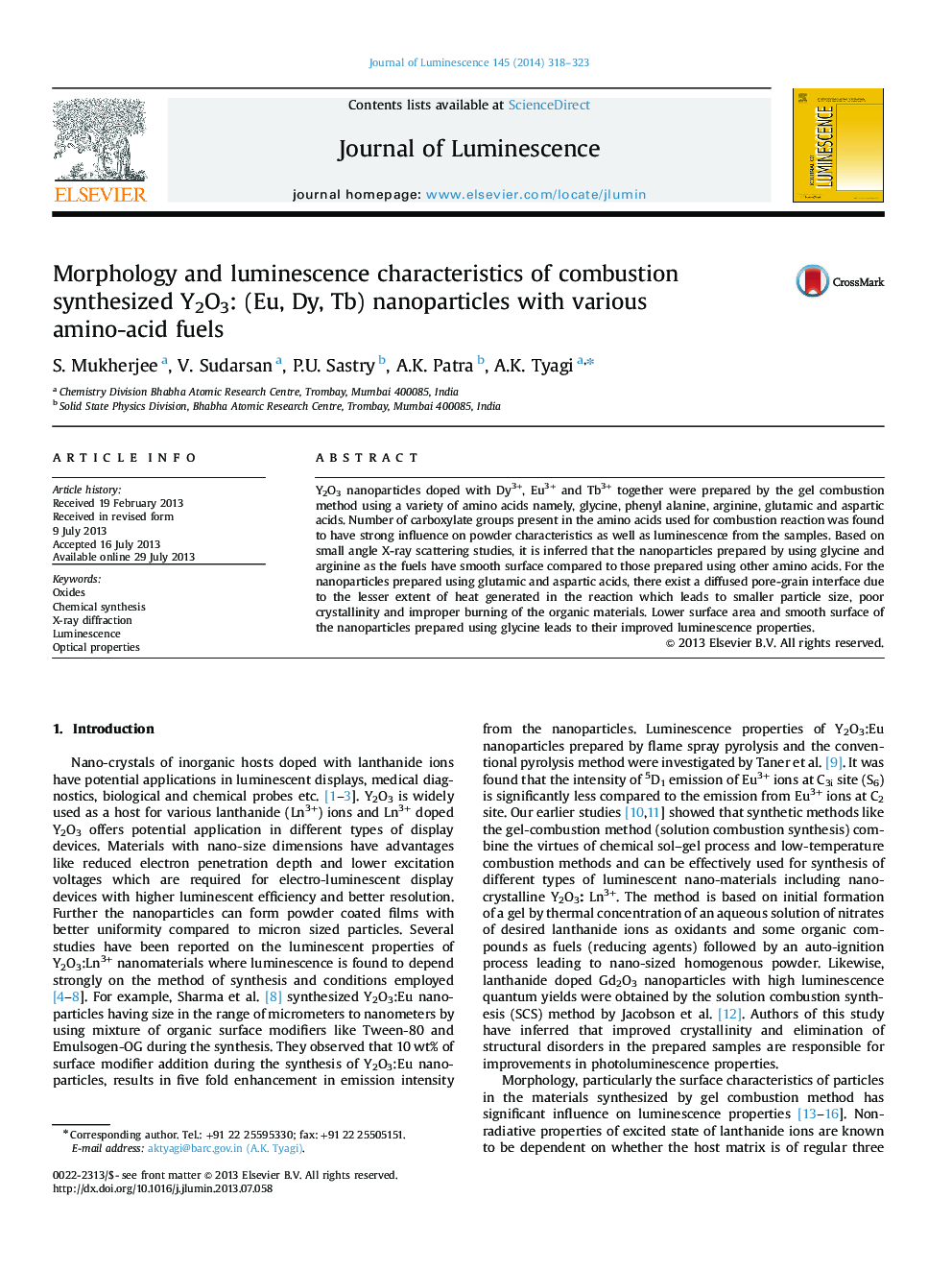| Article ID | Journal | Published Year | Pages | File Type |
|---|---|---|---|---|
| 5400181 | Journal of Luminescence | 2014 | 6 Pages |
Abstract
Y2O3 nanoparticles doped with Dy3+, Eu3+ and Tb3+ together were prepared by the gel combustion method using a variety of amino acids namely, glycine, phenyl alanine, arginine, glutamic and aspartic acids. Number of carboxylate groups present in the amino acids used for combustion reaction was found to have strong influence on powder characteristics as well as luminescence from the samples. Based on small angle X-ray scattering studies, it is inferred that the nanoparticles prepared by using glycine and arginine as the fuels have smooth surface compared to those prepared using other amino acids. For the nanoparticles prepared using glutamic and aspartic acids, there exist a diffused pore-grain interface due to the lesser extent of heat generated in the reaction which leads to smaller particle size, poor crystallinity and improper burning of the organic materials. Lower surface area and smooth surface of the nanoparticles prepared using glycine leads to their improved luminescence properties.
Related Topics
Physical Sciences and Engineering
Chemistry
Physical and Theoretical Chemistry
Authors
S. Mukherjee, V. Sudarsan, P.U. Sastry, A.K. Patra, A.K. Tyagi,
